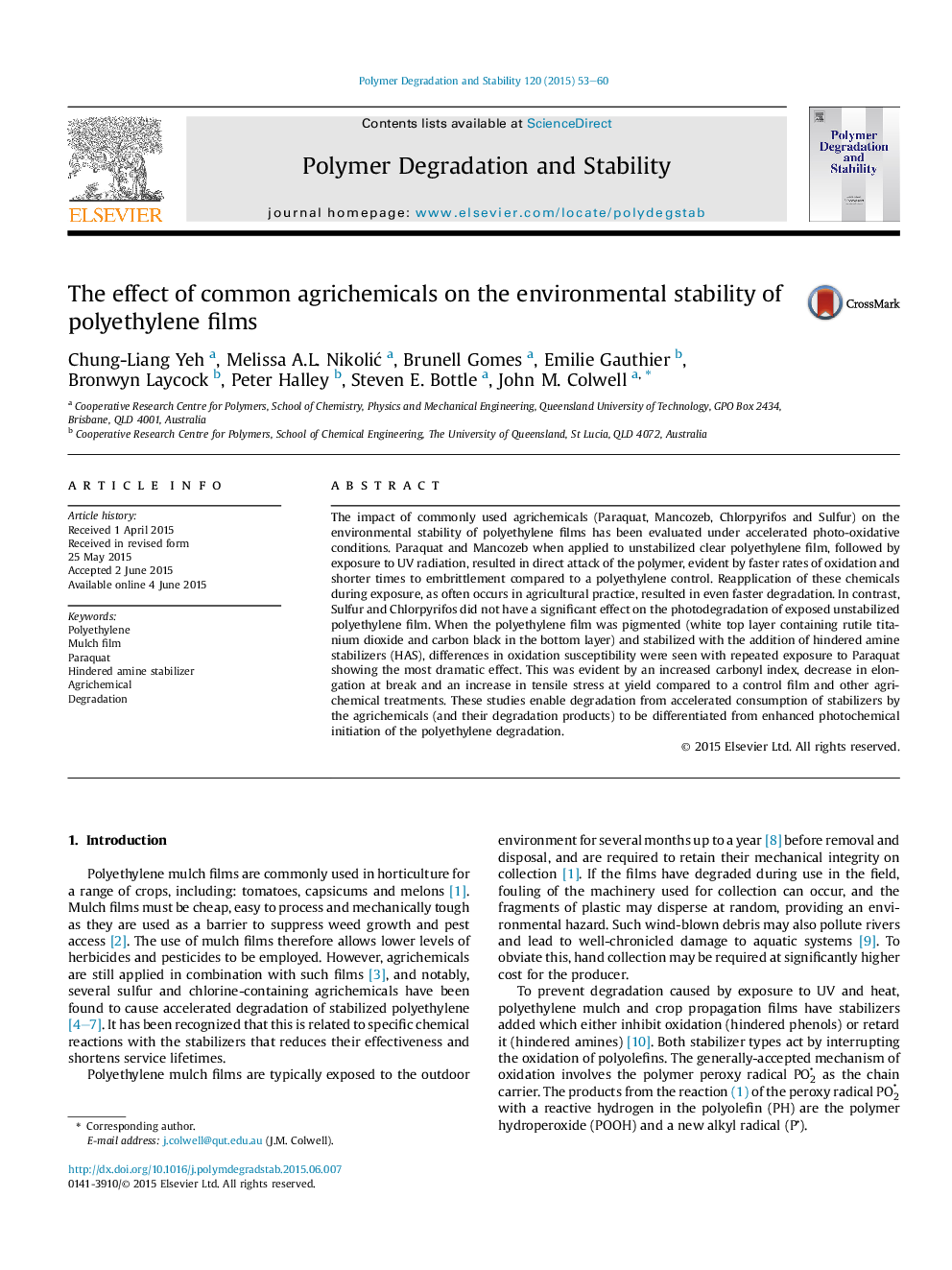| کد مقاله | کد نشریه | سال انتشار | مقاله انگلیسی | نسخه تمام متن |
|---|---|---|---|---|
| 5201288 | 1502893 | 2015 | 8 صفحه PDF | دانلود رایگان |
The impact of commonly used agrichemicals (Paraquat, Mancozeb, Chlorpyrifos and Sulfur) on the environmental stability of polyethylene films has been evaluated under accelerated photo-oxidative conditions. Paraquat and Mancozeb when applied to unstabilized clear polyethylene film, followed by exposure to UV radiation, resulted in direct attack of the polymer, evident by faster rates of oxidation and shorter times to embrittlement compared to a polyethylene control. Reapplication of these chemicals during exposure, as often occurs in agricultural practice, resulted in even faster degradation. In contrast, Sulfur and Chlorpyrifos did not have a significant effect on the photodegradation of exposed unstabilized polyethylene film. When the polyethylene film was pigmented (white top layer containing rutile titanium dioxide and carbon black in the bottom layer) and stabilized with the addition of hindered amine stabilizers (HAS), differences in oxidation susceptibility were seen with repeated exposure to Paraquat showing the most dramatic effect. This was evident by an increased carbonyl index, decrease in elongation at break and an increase in tensile stress at yield compared to a control film and other agrichemical treatments. These studies enable degradation from accelerated consumption of stabilizers by the agrichemicals (and their degradation products) to be differentiated from enhanced photochemical initiation of the polyethylene degradation.
Journal: Polymer Degradation and Stability - Volume 120, October 2015, Pages 53-60
